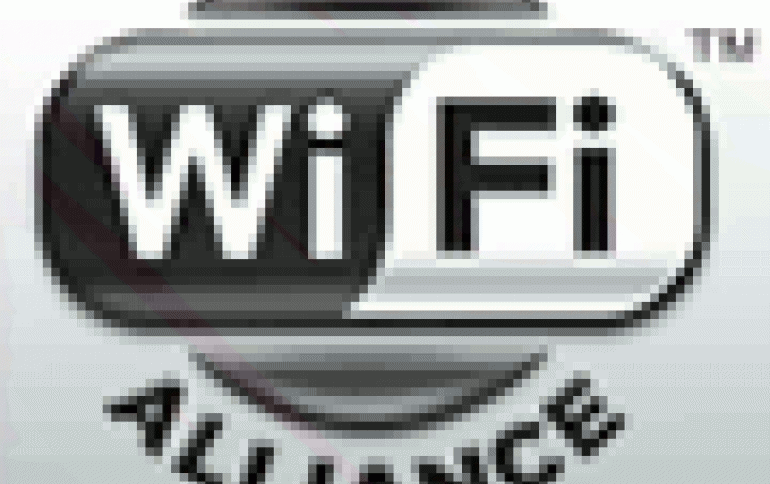
Wi-Fi Direct Technology to support Direct Wireless connections Between Devices
Wi-Fi devices will soon be able to connect to each other using Wi-Fi without needing to connect to a wireless network first.
The Wi-Fi Alliance is nearing completion of a new specification to enable Wi-Fi devices to connect to one another without joining a traditional home, office, or hotspot network. The Wi-Fi Alliance expects to begin certification for this new specification in mid-2010, and products which achieve the certification will be designated Wi-Fi CERTIFIED Wi-Fi Direct.
The specification, previously code-named "Wi-Fi peer-to-peer," can be implemented in any Wi-Fi device, from mobile phones, cameras, printers, and notebook computers, to human interface devices such as keyboards and headphones. Significantly, devices that have been certified to the new specification will also be able to create connections with hundreds of millions of Wi-Fi CERTIFIED legacy devices already in use. Devices will be able to make a one-to-one connection, or a group of several devices can connect simultaneously.
"Wi-Fi Direct represents a leap forward for our industry. Wi-Fi users worldwide will benefit from a single-technology solution to transfer content and share applications quickly and easily among devices, even when a Wi-Fi access point isn't available," said Wi-Fi Alliance executive director Edgar Figueroa. "The impact is that Wi-Fi will become even more pervasive and useful for consumers and across the enterprise."
The specification targets both consumer electronics and enterprise applications, provides management features for enterprise environments, and includes WPA2 security. Devices that support the specification will be able to discover one another and advertise available services. Wi-Fi CERTIFIED Wi-Fi Direct devices will support typical Wi-Fi ranges and the same data rates as can be achieved with an infrastructure connection, so devices can connect from across a home or office and conduct bandwidth-hungry tasks with ease.
"With Wi-Fi technology already shipping in millions of consumer electronics devices and handsets every year, this is a terrific innovation for the industry," said Victoria Fodale, senior analyst and market intelligence manager at In-Stat. "Empowering devices to move content and share applications without having to join a network brings even more convenience and utility to Wi-Fi-enabled devices." The Wi-Fi Alliance plans to publish its peer-to-peer specification upon completion, and will begin certifying devices for the Wi-Fi Direct designation in 2010. Only Wi-Fi Alliance member companies will be able to certify devices to the new specification.
The Alliance seems to be moving into the territory of Bluetooth, a competing wireless technology that already handles direct connections between gadgets. Bluetooth uses less power but has much shorter range and a lower transfer speed. To tackle the latter problem, the industry group behind Bluetooth announced last year that it would co-opt Wi-Fi technology to make it possible to send videos and other bandwidth-hogging files around the house, much as Wi-Fi Direct promises to do.
The specification, previously code-named "Wi-Fi peer-to-peer," can be implemented in any Wi-Fi device, from mobile phones, cameras, printers, and notebook computers, to human interface devices such as keyboards and headphones. Significantly, devices that have been certified to the new specification will also be able to create connections with hundreds of millions of Wi-Fi CERTIFIED legacy devices already in use. Devices will be able to make a one-to-one connection, or a group of several devices can connect simultaneously.
"Wi-Fi Direct represents a leap forward for our industry. Wi-Fi users worldwide will benefit from a single-technology solution to transfer content and share applications quickly and easily among devices, even when a Wi-Fi access point isn't available," said Wi-Fi Alliance executive director Edgar Figueroa. "The impact is that Wi-Fi will become even more pervasive and useful for consumers and across the enterprise."
The specification targets both consumer electronics and enterprise applications, provides management features for enterprise environments, and includes WPA2 security. Devices that support the specification will be able to discover one another and advertise available services. Wi-Fi CERTIFIED Wi-Fi Direct devices will support typical Wi-Fi ranges and the same data rates as can be achieved with an infrastructure connection, so devices can connect from across a home or office and conduct bandwidth-hungry tasks with ease.
"With Wi-Fi technology already shipping in millions of consumer electronics devices and handsets every year, this is a terrific innovation for the industry," said Victoria Fodale, senior analyst and market intelligence manager at In-Stat. "Empowering devices to move content and share applications without having to join a network brings even more convenience and utility to Wi-Fi-enabled devices." The Wi-Fi Alliance plans to publish its peer-to-peer specification upon completion, and will begin certifying devices for the Wi-Fi Direct designation in 2010. Only Wi-Fi Alliance member companies will be able to certify devices to the new specification.
The Alliance seems to be moving into the territory of Bluetooth, a competing wireless technology that already handles direct connections between gadgets. Bluetooth uses less power but has much shorter range and a lower transfer speed. To tackle the latter problem, the industry group behind Bluetooth announced last year that it would co-opt Wi-Fi technology to make it possible to send videos and other bandwidth-hogging files around the house, much as Wi-Fi Direct promises to do.





















